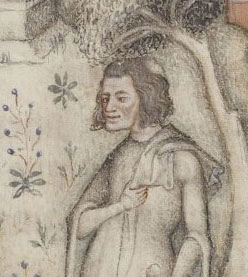Overview
Top Works
| Machaut: Messe de Nostre Dame | Composer | 1365前 | |
| Machaut: Douce Dame Jolie | Composer | 14世纪 |
Biography
Guillaume de Machaut (French: [gijom də maʃo]; sometimes spelled Machault; c. 1300 – April 1377) was a medieval French poet and composer. He is regarded by many musicologists as the greatest and most important composer of the 14th century. One of the earliest composers on whom significant biographical information is available, Daniel Leech-Wilkinson called Machaut "the last great poet who was also a composer". Well into the 15th century, Machaut's poetry was greatly admired and imitated by other poets, including Geoffrey Chaucer.
Machaut composed in a wide range of styles and forms. He is a part of the musical movement known as the ars nova. Machaut helped develop the motet and secular song forms (particularly the lai and the formes fixes: rondeau, virelai and ballade). Machaut wrote the Messe de Nostre Dame, the earliest known complete setting of the Ordinary of the Mass attributable to a single composer. Some of his best-known rondeaus are "Ma fin est mon commencement" and "Rose, liz, printemps, verdure".
Music
As a composer of the 14th century, Machaut's secular song output includes monophonic lais and virelais, which continue, in updated forms, some of the tradition of the troubadours. He also worked in the polyphonic forms of the ballade and rondeau and wrote the first complete setting of the Ordinary of the Mass which can be attributed to a single composer.
Secular music
The lyrics of Machaut's works almost always dealt with courtly love. A few works exist to commemorate a particular event, such as M18, "Bone Pastor/Bone Pastor/Bone Pastor." Machaut mostly composed in five genres: the lai, the virelai, the motet, the ballade, and the rondeau. In these genres, Machaut retained the basic formes fixes, but often utilized creative text setting and cadences. For example, most rondeau phrases end with a long melisma on the penultimate syllable. However, a few of Machaut's rondeaux, such as R18 "Puis qu'en oubli", are mostly syllabic in treatment.
Machaut's motets often contain sacred texts in the tenor, such as in M12 "Corde mesto cantando/Helas! pour quoy virent/Libera me". The top two voices in these three-part compositions, in contrast, sing secular French texts, creating interesting concordances between the sacred and secular. In his other genres, though, he does not utilize sacred texts.
Sacred music
Machaut's cyclic setting of the Mass, identified in one source as the Messe de Nostre Dame (Mass of Our Lady), was composed in the early 1360s probably for Rheims Cathedral. While not the first cyclic mass – the Tournai Mass is earlier – it was the first by a single composer and conceived as a unit. Machaut was probably familiar with the Tournai Mass since Machaut's Mass shares many stylistic features with it, including textless interludes.
Whether or not Machaut's mass is indeed cyclic is contested; after lengthy debate, musicologists are still deeply divided. However, there is a consensus that this mass is at best a forerunner to the later 15th-century cyclic masses by the likes of Josquin des Prez. Machaut's mass differs from these in the following ways: (1) he does not hold a tonal centre throughout the entire work, as the mass uses two distinct modes (one for the Kyrie, Gloria, and Credo, another for Sanctus, Agnus and Ite missa est); (2) there is no extended melodic theme that clearly runs through all the movements, and the mass does not use the parody technique; (3) there is considerable evidence that this mass was not composed in one creative act. The fact that the movements were placed together does not mean they were conceived as such.[8]
Nevertheless, the mass can be said to be stylistically consistent, and certainly the chosen chants are all celebrations of Mary, the mother of Jesus. Also adding weight to the claim that the mass is cyclic is the possibility that the piece was written or assembled for performance at a specific celebration. The possibility that it was for the coronation of Charles V, which was once widely accepted, is thought unlikely in modern scholarship. The composer's intention that the piece be performed as one entire mass setting makes the Messe de Nostre Dame generally considered a cyclic composition.

Index: 9.1
Type: Person Male
Period: 1300.. - 1377.4.13
Age: aged 77
Area :France
Occupation :Composer
Periods :Medieval Music
